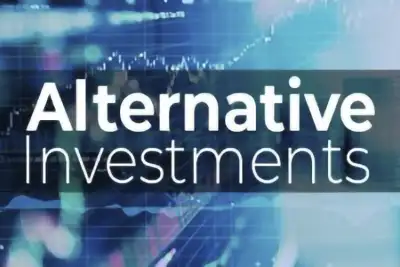

None of us thought we would live long enough to see our group of alternative investments reverse their multi-year slump, but it is finally happening. Our alternative investment portfolio has outperformed stocks and bonds so far this year and over the past twelve months.
That may seem like no big deal after several years of relatively poor performance, but alternatives as a group are now ahead of bonds since we started investing in them. And that is why we bought them in the first place. Interest rates were already low several years ago, and it seemed unlikely that bonds would be able to generate sufficient returns in such an environment. The solution? Find new investments that could hedge the risk of stocks while also earning higher long-run returns than bonds. We did that. But it didn’t start out so well.
That said, every investment has up and down cycles. It can be tough to ride through the down cycles, particularly when stocks are doing so well, but we kept reviewing our investment thesis (which seemed sound) and the longer-term historical data (which was supportive) and tried to tune out the short-term noise. It hasn’t been easy, and not everyone has been happy investing in esoteric funds with higher costs and lackluster recent performance.
It is too early in this new cycle to declare victory, but our alternative funds are holding up quite well as stocks and bonds decline. There is also reason to expect a brighter future as the overall stock market and economic landscape is changing. Since 2008 diversification hasn’t really worked. The best bet, in retrospect, would have been to put all your money in large, U.S.- based, technology stocks. They have outperformed virtually everything else, just like during the Dot-Com Bubble of the 1990s. However, that cycle ended quite badly for tech stocks and the power of diversification was once again revealed in the 2000s. We expect a similar outcome this time around.
In some ways it is already happening. Unprofitable tech stocks have been some of the biggest losers in the stock market recently. Value stocks have held up fairly well, and the overall stock market so far has been more tenacious than many would have guessed. Still, there are plenty of reasons to worry. Diversifying into lower, or uncorrelated, alternative asset classes can help reduce large stock and bond market losses.
In terms of our alternatives group’s construction, they were selected because they have low correlation to stocks, and therefore can make excellent diversifiers. As expected from a diversified group, we have had some funds that haven’t performed great, such as the BlackRock Systematic Multi- Strategy Fund (BIMBX) and the reinsurance and catastrophe bond funds we have bought. However, as a group the alternatives have done quite well during a volatile time for stocks.
There is still ground to make up, but we have seen impressive gains for our “style premia” funds, our managed futures funds, and the alternative lending fund we use. In some cases, these funds still have anemic returns since we first bought them, but they are making up ground quickly with double digit returns so far this year.
For those holding private real estate, returns have also been strong. The former Broadtree fund (we’ll probably never stop calling it that since the new name is so cumbersome) was up almost 50% last year. Residential real estate is a solid hedge against inflation since leases can renew at higher rates each year.
The macro environment continues to create a solid backdrop to seek additional diversification, and we hope for further gains in our group of alternatives. Historically these funds have held up well during stock market drawdowns. Although every market cycle is unique, we’re happy to see them finally working as prescribed.